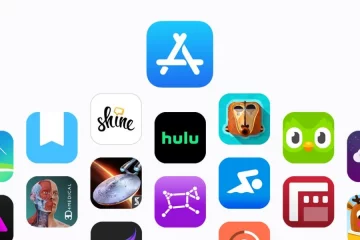How to Design an App that Stands Out from the Competition

Design an App | mykaba
In today’s digital world, having an app that stands out from the competition is crucial for success. With the ever-increasing number of apps available on the app stores, it can be challenging to create an app that stands out and captures the attention of users. However, with the right design strategies, it is possible to create an app that not only looks great but also provides a seamless user experience. As a skilled assistant with expertise in digital marketing, copywriting, and content writing, I have seen firsthand the impact that a well-designed app can have on a business. In this article, we will explore some of the best design strategies for creating an app that stands out from the competition and attracts users. Whether you’re a startup looking to launch your first app or an established business looking to revamp your existing app, these tips will help you create an app that stands out from the crowd.
Market research for app design
Before designing your app, it’s essential to conduct market research to understand your target audience’s needs and preferences. This involves analyzing your competitors’ apps, understanding their strengths and weaknesses, and identifying gaps in the market that your app can fill. It would be best to conduct surveys and focus groups to gather feedback from potential users, which will help you refine your app’s features and design.
Moreover, it’s important to research the latest trends in app design and development, including emerging technologies and design principles. This will help you stay ahead of the curve and create an app that not only meets current user needs but is also future-proofed.
Identifying your target audience
Once you have conducted market research, the next step is to identify your target audience. This involves creating user personas that represent your ideal user, including their demographics, interests, and behavior patterns. By understanding your target audience, you can design an app that meets their specific needs and preferences and provides a personalized user experience.
When designing your app, it’s also important to consider the context in which it will be used. For example, if your app is designed for use in a noisy or distracting environment, you may need to incorporate audio cues or haptic feedback to alert users to important information.
Creating a unique app design concept
To stand out from the competition, your app needs to have a unique design concept that sets it apart from other apps in your niche. This involves creating a visual identity that reflects your brand’s personality and values, including your choice of colors, typography, and imagery.
When designing your app, it’s important to consider the user journey and how users will interact with your app. This involves creating wireframes and prototypes that map out the app’s navigation and user flow, ensuring that the design is intuitive and easy to use.
It’s also worth considering incorporating gamification elements into your app design, such as rewards, badges, and leaderboards, to encourage user engagement and retention.
Best practices for app design
When designing your app, there are several best practices to keep in mind. Firstly, it’s essential to keep your design simple and intuitive, avoiding clutter and unnecessary complexity. This includes using clear and concise language, avoiding jargon or technical terms that may confuse users.
Secondly, it’s important to prioritize the most important features and functions of your app, ensuring that they are easy to access and use. This involves using visual hierarchy to emphasize important information and using clear and descriptive labels for buttons and icons.
Finally, it’s important to design your app for scalability, ensuring that it can accommodate growth and new features over time. This involves using modular design principles and designing with flexibility in mind.
Designing for user experience
The user experience is one of the most critical aspects of app design, as it can significantly impact user engagement and retention. To design an app that provides a seamless user experience, it’s important to focus on the following elements:
- Navigation: Ensure that your app’s navigation is intuitive and easy to use, allowing users to easily access the features and functions they need.
- Performance: Optimize your app’s performance, ensuring that it loads quickly and responds promptly to user actions.
- Accessibility: Design your app with accessibility in mind, ensuring that it is usable by people with disabilities, such as those with visual impairments or motor disabilities.
- Personalization: Provide users with the ability to personalize their app experience, such as by customizing their profile or choosing their preferred language.
Importance of app icon design
Your app’s icon is often the first thing that users see when browsing the app store, and it can significantly impact whether they decide to download your app. Therefore, it’s essential to design an app icon that is memorable, eye-catching, and reflective of your brand’s personality.
When designing your app icon, it’s important to consider the following elements:
- Simplicity: Keep your app icon simple and easy to recognize, using clear and bold shapes and colors.
- Consistency: Ensure that your app icon is consistent with your app’s visual identity, including your choice of colors, typography, and imagery.
- Scalability: Design your app icon with scalability in mind, ensuring that it can be easily scaled up or down without losing clarity or detail.
Designing for multiple platforms
With the proliferation of different devices and operating systems, it’s essential to design your app for multiple platforms, including iOS, Android, and web. This involves adapting your app’s design to suit the unique characteristics of each platform, such as screen size, resolution, and interaction patterns.
When designing for multiple platforms, it’s important to ensure that your app’s design is consistent across all platforms, including your choice of colors, typography, and imagery. This will help to reinforce your brand’s visual identity and provide a seamless user experience across different devices.
Testing and evaluating your app design
Once you have designed your app, it’s essential to test and evaluate its effectiveness. This involves conducting user testing to gather feedback and identify areas for improvement, as well as using analytics tools to track user behavior and engagement.
When testing your app, it’s important to consider the following elements:
- Usability: Test your app’s usability, ensuring that it is easy to use and navigate.
- Performance: Test your app’s performance, ensuring that it loads quickly and responds promptly to user actions.
- Accessibility: Test your app’s accessibility, ensuring that it is usable by people with disabilities.
- User satisfaction: Gather feedback from users to evaluate their satisfaction with your app’s design and functionality.
App design trends to watch
As app design continues to evolve, there are several trends to watch for in the coming years. These include:
- Dark mode: The rise of dark mode, which reduces eye strain and saves battery life.
- Voice-based interfaces: The growing use of voice-based interfaces, which provide a hands-free and more natural way of interacting with apps.
- Augmented reality: The increasing use of augmented reality, which enhances the user experience by overlaying digital elements onto the real world.
- Personalization: The growing importance of personalization, which allows users to customize their app experience to suit their individual preferences and needs.
Conclusion
Designing an app that stands out from the competition requires careful planning, research, and execution. By following the design strategies outlined in this article, you can create an app that not only looks great but also provides a seamless user experience. Whether you’re a startup looking to launch your first app or an established business looking to revamp your existing app, these tips will help you create an app that stands out from the crowd and attracts users. Remember to prioritize user experience, design for scalability, and adapt your design to suit multiple platforms and emerging trends. With these strategies, you can create an app that sets you apart from the competition and delivers real value to your users.









